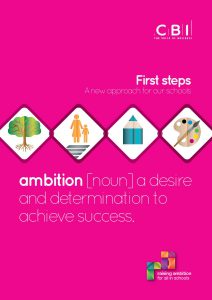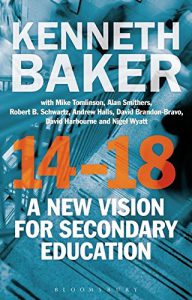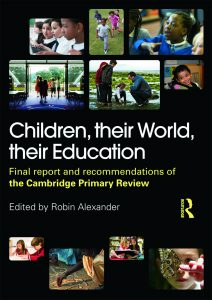Three Tiers For Success
A system designed to meet the needs of children as they grow and develop

Research published by National Middle Schools’ Forum – Nigel Wyatt January 2018
Introduction
The first middle schools in this country opened in the late 1960s. Their numbers grew rapidly through the 1970s until by 1982 there were 1,816 middle schools operating in England. This rapid expansion was a response to sharply rising pupil numbers and led to a debate over existing practice. As we face similar pressures today, it is time to reconsider the role that middle schools can play in the future development of our education system.
- Rising pupil numbers. In the early 1970s the number of children of school age grew At a time whenresources were short, the introduction of middle school systems presented a cost effective way forward.Today the baby boom that began in 2002 leaves the education system facing a similar problem. A TES article in July 2017 reported that the number of secondary pupils is projected to rise by a fifth in the next decade:
The number of pupils in England’s schools is expected to rise by more than 650,000 in just under a decade, new forecasts published by the Department for Education suggest… And by 2026, it is predicted that there will be 534,000 more pupils in secondary school than this year – a rise of 19.1 per cent over the 2017-2026 projection period.1
As the education system struggles to provide for these increasing numbers it is timely to reconsider the benefits that three tier solutions can provide.
- An educational opportunity to be seized. The rapid expansion of the education system in the late 1960s also demanded a reappraisal of educational practice. The advent of new types of school went hand in hand with a debate about how children in the ‘middle years’ should best be educated. The Plowden Report of 1967 1 investigated these issues and recommended changing the age of school transfer.A Plowden Report for our own times, The Cambridge Primary Review 2, published in 2009, drew on extensive research, to review current primary school practice. It was critical of the single classroom teacher model for teaching upper primary pupils, and proposed the model of semi specialist teaching common to the first years of a middle school.
This paper, then, presents a timely summary of current evidence of the effectiveness of three tier systems, both nationally and internationally.
First a summary of the current context
In September 2017 there were over 55,000 pupils being taught in 121 middle schools. All but five of these are middle deemed secondary schools, while the five remaining middle deemed primary schools are all in Worcestershire. 17 local authority areascurrently have at least one middle school. In what is a rapidly changing picture just over half of the current middle schools are academies or part of multi-academy trusts.
1 See www.tes.com/news/school-news/breaking-news/secondary-pupils-projected-rise-a- fifth-a-decade
2 Alexander, R. Children, their World, their Education, Routledge, 2009
Achievement
How do the achievements of children in three tier systems compare with other forms of schooling? We can begin to answer thisby looking at the common end-point for those in two tier and three tier systems, when all children take their exams at age 16. The tables below show that students in three tier schools achieve above the average for all state funded schools in England. Critics of middle schools systems have in the past sought to portray the three tier system of schooling as somehow inherently flawed and unable to deliver good outcomes for pupils. Analysis of recent GCSE data shows that the opposite is the case.
2016
An analysis of the 2016 KS4 results reveals that students at 16 in three tier system upper schools achieve well in comparison tothe national average for all state funded schools:
| Percentage gaining gradeC+ in Eng & Maths | Percentage achieving E Bacc | |
| National – 3 tier schools | 67.8% | 25.4% |
| National – All schools | 63% | 24.7% |
2017
There were significant changes to the Key Stage 4 exams in 2017 that makes direct comparison with the 2016 results difficult. 3
The following table compares the results for students in three tier upper schools with all state funded schools. (The figuresshowing the percentage achieving at grade 4 and above in English and Maths are more comparable with the outcomes in 2016,but not directly equivalent.)
3 There is a good explanation of the main changes and the national 2017 outcomes here: www.gov.uk/government/uploads/system/uploads/attachment_data/file/653532/SFR57_2017.pdf
Percentage achieving E Bacc grade 4 and above | Percentage gaining Eng & Maths at grade 4and above | Percentage achieving E Bacc grade 5 and above | Percentage gaining Eng & Maths at grade 5 and above | |
National – 3 tier schools | 24% | 68.1% | 21.6% | 45.7% |
National – All schools | 23.5% | 63.3% | 21.1% | 42.2% |
Again, it is clear that, whether considering the achievements at grade 4 or grade 5 and above, there is still a consistent trend, withstudents in three tier schools achieving higher outcomes than those in all schools.
The National Middle Schools’ Forum view has long been that the only fair way to compare two and three tier systems is to look at the outcomes from the two forms of schooling at 16. This is the common end point for both forms of schooling.
These figures highlight what has been clear to the middle school community for some time – that pupils in middle schools make very good progress during Year 7 and Year 8 in their final years at middle school. It has been a matter of some frustration that because of the current focus on KS2 results this is not shown in any nationally available data, but it is evident in our own middleschool benchmarking data. Until 2015, when national curriculum levels ceased to be used, NMSF collected and analysed theresults of the optional Year 8 SAT tests to provide a point of comparison for pupils leaving our middle schools that could be shared with stakeholders such as Ofsted. These results could then be compared with the national results from the last KS3 SATs taken by pupils in Year 9 (who were a year older) in 2007. To take the results in maths:
Maths
| Average PointScore | |
| 2007 – National Year 9 SATs | 36.7 |
| 2011 | 36.8 |
| 2012 | 37.9 |
| 2013 | 38.5 |
| 2014 | 38.6 |
| 2015 | 39.2 |
The table and graph show middle school pupils achieving higher levels at the end of Year 8 than all pupils at the end of Year 9 in2007, with an improving trend in the results. The results for English and Science show a similar outcome and trend.
Inspection
Another source of evidence on the effectiveness of three tier systems comes from the outcomes of inspections by Ofsted. An analysis of the latest inspection outcome for each middle school in the country in September 2017 revealed that 85% of schools were judged to be good or better. This places the outcomes for middle schools where you might expect, in between the outcomes for secondary schools, at 79% good or better, and that for primary schools at 91% good or better.
Ofsted outcomes -as at September 2017
| Middle Schools – Sept 2017 | All Schools as at 31July 2017 (%) | |||||
| Number | Percentage | Secondary | Primary | All | ||
| Outstanding | 13 | 11 | 23 | 19 | 21 | |
| Good | 89 | 74 | 56 | 72 | 68 | |
| Requires Improvement | 17 | 14 | 15 | 8 | 9 | |
| Inadequate | 2 | 2 | 6 | 1 | 2 | |
Comparing Ofsted Outcomes
Outstanding
Good
Requires Improvement
Inadequate
Managing effective transitions between schools
Continuity in the curriculum and progression in learning as pupils move from primary to secondary schools are longstanding weaknesses of the education system.4
A recent article in the TES by Nick Campion, writing from the perspective of the parent of a child changing schools in a two tierarea, characterised transfer at age eleven from primary to secondary school as
… a huge shift from a big fish in a small pond to tiny fish in a massive pond. It’s traumatic for some, it’s difficult for manyand it’s challenging for all.5
It is sometimes asserted that first, middle and upper school systems are at a disadvantage because children change schools twice, andthat each change slows the pace of learning.
A major study of the management of transitions in three tier systems undertaken on 20176, using pupil surveys and individual pupils interviews before and following transfer between schools, has provided evidence that transitions between schools at age 9 and 13 are better managed and are not associated with the sharp change many children experience when changing schools at ageeleven.
Overall, through the pupil surveys, and in particular in the evidence from the individual interviews, pupils report that the transition between schools has been a remarkably smooth and a largely positive experience. There has been a continuity of classroom expectations for work and behaviour, together with positive attitudes to schools and staff. The pupils’experience of the change of school has not been characterised by the marked change in culture and climate that many primary school pupils experience as they move from primary school to larger secondary schools at age 11. Rather wemight characterise the experience as more akin to that of changing classes within a primary school.
Transitions between schools in three tier systems are better managed because:
- The change of school happens at a more developmentally appropriate stage for pupils – avoiding the double whammy of school transfer coinciding with the onset of puberty.
- The organisation of a typical middle school provides a smooth ‘bridge’ – with a gradual change each year from the typical form of more generalist teaching of the primary classroom to the more specialist teaching typical of a secondary school.
- The result is that children in three tier schools experience a continuity of classroom culture and expectations that supports their learning when they change schools – rather than the very sharp change many experience when changing schools at age. 11.
4 Changing Schools, HMI, 2002 p.2
5 Eleven is too young for secondary school. Children need to be left to be children. Nick Campion, TES, 30th September 2017
6 Managing Effective Transitions in Three Tier Systems, NMSF 2017 available here www.middleschools.org.uk
Advantages of middle school systems
Access to specialist teaching
The Cambridge Primary Review echoes other research in identifying the role of the general class teacher as a weakness in the present primary school system for older primary age pupils.
The model of the generalist teacher in primary schools has been in place since the 19th century when it was introduced to cut costs. This system should now be revised with the introduction of more specialist teachers, some of whom couldbe shared between schools. It acknowledges that this would be expensive.7
The report argues that this generalist teaching role is no longer sufficient and that the subject knowledge of primary teachers is one of the often cited weaknesses of primary schools in Ofsted reports. The report concludes:
Recommendation no 128 …a fully generalist approach may be maintained for the early primary years with ageneralist/specialist mixture in upper primary.8
If you have once seen children aged 9 and 10 working with specialist technology teachers in a workshop, or seen them training with specialist PE teachers, you see that they are ready for wider experiences than can be offered by a single teacher.
Why two points of transfer might offer advantages
The advantage of a system with two points of transfer is that it results in schools which are better able to focus on the needs ofchildren at different stages of their education.
The change of school at age 11 came about by historical accident, and has resulted in schools that cater for wide span of ages. The Plowden Report, for example, suggested that schools catering for large age ranges were not able to focus on the distinct needs of different age groups. The needs of 11 and 12 year olds, are very different from those of both five year olds and 16 year olds. The introduction of middle school systems was, in part, an attempt to introduce a form of schooling better matched to thedevelopmental needs of children. One where schools catered for about four age groups, and so were not over large and one where schools could be developed that were better focused on the needs of pupils at each stage of their education.
One common criticism of the establishment of middle schools in the past has been that they do not offer a distinct form of organisation – in the way that primary and secondary schools respectively typically offer generalist and specialist teaching.9However, the evidence from the research on transitions in three tier areas has demonstrated the effectiveness of what we mightterm the ‘bridge’ model for the organisation within middle schools. One in which students experience a carefully managed and smooth change from a degree of generalist teaching on entry to middle school to more discretely specialised teaching in the finalyear. One in which the degree of specialist teaching changes gradually year by year, rather than the steep change many pupils currently experience changing schools at age 11.
7 Cambridge Primary Review Booklet, page 36
8 Alexander, R. Children, their World, their Education, Routledge, 2009, page 506
9 See for example, Hargreaves, A. 1980. The Ideology of the Middle School. In Hargreaves, A. & Tickle, L. 1980. Middleschools, Origins, ideology and practice. London: Harper.
Broad and Balanced Curriculum
Recent speeches by Her Majesty’s Chief Inspector, Amanda Spielman, have highlighted her concern about the negative consequences for pupils of an excessive concentration on test and exam results at the expense of the broader educational experience that all children deserve:
One of the areas that I think we sometimes lose sight of is the real substance of education. Not the exam grades or the progress scores, important though they are, but instead the real meat of what is taught in our schools and colleges: the curriculum. To understand the substance of education we have to understand the objectives. Yes, education does have toprepare young people to succeed in life and make their contribution in the labour market. But to reduce education down to this kind of functionalist level is rather wretched. Because education should be about broadening minds, enriching communities and advancing civilisation…
The idea that children will not, for example, hear or play the great works of classical musicians or learn about the intricacies of ancient civilisations – all because they are busy preparing for a different set of GCSEs – would be a terribleshame. All children should study a broad and rich curriculum.10
While it is undeniable that, as in other schools, middle schools have to some extent modified their curriculum arrangements to respond to government led pressure over test results, most middle schools retain a guarantee of a broad and balanced curriculum in the timetable and more specialist teaching and facilities on offer from the age of nine. Middle schools are equipped with specialist rooms for art, technology and science.
As part of the research into transitions (see above) the children who had recently started at their Somerset middle school at theage of 9 make perceptive comments about this when interviewed:
In my first school we did not have a timetable. Now we have a timetable and move around to different lessons. I see different teachers which is something that I like. (Cheddar: Pupil I – October 2017)
We have to move to different classes during the week and I now know where they are and I quite like having different teachers for different lessons. If you only have one teacher they may not be so strong in the lesson you are learning – so a teacher may be a good English teacher but perhaps not so strong in Maths. (Cheddar: Pupil G – October 2017)
I also enjoy drama which is a lesson here on the timetable rather than just a club as it was at first school. In PE we have awider range of proper sports – we have been playing hockey and we will soon start rugby. (Cheddar: Pupil H – October2017)
My favourite lesson is English but I also like Art, IT and Drama. We had Art in the art room where there are special art tables. At the moment we sketching natural objects (Cheddar: Pupil J– October 2017)
Children’s forgotten middle years
The importance of the middle years to pupil well-being
The unrelenting focus of accountability measures on test and exam results, has led to a growing concern about the effects of allthis on children’s mental health and well-being. The middle years of schooling are particularly important formative years,encompassing the transition from the world of the young child to that of the young adult. In the UK, however, the needs of thisgroup of children have been largely overlooked. A recent report in the Sydney Morning Herald, reporting on the Towards a ‘good life’ for children in their middle years study under the auspices of the Australian Child Well-being Project puts it well:
Early intervention when children are very young – from birth to three years of age, while their brains and skills are developing rapidly – can dramatically improve life prospects. Basics such as good nutrition, language development, and physical, cognitive and social skills can be helped by family and supported by social and early-child development programs.
Less recognised is the importance of the second stage of rapid brain development, early adolescence. Between the ages of eight and 14, a period sometimes called the “middle years”, a person’s brain goes through changes almost as radical asthose in the first two years. If we want to maintain momentum from initiatives to foster development in early years, and intervene to prevent problems and set future, positive life courses, this time represents an important second chance.11
There has been increasing concern about how we best meet the needs of children between the ages of 8 and 13. This was wellexpressed by Ed Balls when he was Education Secretary:
A generation of British “tweenagers” – children aged between eight and 13 – are at risk of losing interest in school and experimenting with drugs and alcohol as the problems traditionally associated with teenagers come into effect earlier, a minister warned yesterday.12
Balls is not the only one, however, to be concerned about the ways in which the pressures from modern society on children intheir middle years are affecting the ways in which these children grow and develop. The issue was also clearly articulated by parents who responded to the community events held as part of the independent Cambridge Primary Review led by ProfessorRobin Alexander:
Interestingly, parents in a number of other soundings commended a return to the middle school system to reduce the trauma of primary–secondary transfer and segregate younger children from the influence of teenagers. Contemporaryanxieties are in this case prompting a desire to reinstate a pattern of schooling with which an earlier generation haddecided to dispense. The middle schools may have disappeared but the anxieties have not, and for this reason wesuggest that the issue is of much more than local interest.13
These concerns are well founded and bring us back to the central argument for the continued existence of middle schools – that they are best suited to meet the needs of children and healthy child development. Our present narrow focus on what is easily measurable has led to a distorted view of the purposes of education. There is more to a sound education and schooling than test results. Education leaders, politicians and parents all haveconcerns about the pressures placed on a generation of ‘tweenagers’ to grow up too quickly and the distorting and negativeeffects that these pressures can have on healthy development. What do we know, then, about the needs of ‘tweenagers’ – the 8 to13 age group?
11 Stephen Bartos, Children’s forgotten ‘middle years’, ages eight to 14, are crucial to well-being, Sydney Morning Herald 9 February 2017
12 Balls calls for new policies to help ‘tweenagers’ cope with temptation, the Guardian, Tuesday November 20 2007
13 Community Soundings: the Primary Review regional witness sessions P.39
A rationale for middle school education.
Young adolescents grow and change physically, intellectually, emotionally and socially at a rate greater than at any other time in their lives, except from birth to age three. English middle schools, with their subject specialist teaching and close teacher-child relationships can give the security, stability and challenge that is critical for the growing self-confidence of these young adults.
The 1967 Plowden Report recognised these distinctive features of the middle years. It was commissioned to investigate theeffectiveness of the traditional age for school transition at 11. It recommended the adoption of a three-tier system of schooling tofit best with the distinctive stages of child development.
What advantages does the middle school system offer?
- Access to specialist teachers and specialist facilities from age 8 or 9 - children enjoy working with a range of teachers and are ready to use technology rooms and science laboratories.
- A relatively small and secure environment, where they are well known, in which to thrive and develop.
- Staff who can specialise in teaching Key Stage 3 – with the specialist rooms and facilities required.
- A planned and smooth transition from the world of the primary classroom to the wider opportunities of an upper school.
- Pupils arrive at their upper school keen and eager for success at a time when traditionally, disaffection and disenchantment begin to affect secondary schools in the two-tier system.
Above all the middle school provides wider opportunities for young adolescents within what are still relatively small institutions.This enables their intellectual and emotional needs to be met within secure and clearly defined boundaries.
National recognition of the advantages of three tier education
Support for a re-evaluation of the contribution of middle school systems has recently come in a number of important reports andpublications.

C .B.I. – First Steps report, 2012
Too many young people get lost in the transfer between schools at 11. We need arenewed focus on how we engage them around the time of that change, up to andincluding a discussion of whether 11 is still the right age. Further work on this isnecessary. (p.9)
With 40% of children failing to make progress in their first year at secondary school, this merits further investigation – the CBI believes a study, looking in particular at the effect ondevelopment of different settings, like middle schools, is required. (p.52)

A New Vision for Secondary Education Kenneth Baker (Bloomsbury, 2013)
However, most children go through puberty between the ages of 9 and14. It is a period of rapid development and for many, acute self- consciousness. They see themselves, quite naturally, as different from younger children. At the same time, they may benefit from being keptat arm’s length from the sometimes dubious influence of older teenagers.
This is an important argument for seeing 9–14 as a separate phase of education.
There is already a model for this: the middle school. (P.17)

Cambridge Primary Review: Children, their World, their Education Professor Robin Alexander (Routledge, 2009)
Key recommendation for middle schools – No 107: Page 503
Local authorities responsible for England’s remaining first and middle schools should not lightlydismiss the case for their retention based on the developmental benefits for their pupils.
“Those parents, teachers and pupils who believe that middle schools offer a more developmentallyappropriate environment for children aged nine to 13 should also be heeded”
Middle Schools – popular in a broad range of countries around the world
Middle schools systems are common around the world, and have been growing in some countries. As will be seen in the examples below they are valued as an important bridge between the single classroom based world of primary education andthe subject specialism of upper secondary schools, in schools designed around the specific needs of middle years pupils. Somecountries have adopted the middle school model in their attempts to address perceived underachievement in the middleschool age pupils within two tier education systems.
USA
Around 20 million students in the 10 to 15 age range are enrolled at middle schools in the USA. There has been a steadyincrease in the number of middle schools since the 1970s as the number of junior high schools has fallen. Since 2004 the number of middle schools has grown by 8 per cent so that there were 13,300 middle schools in 2013/2014.
The National Forum to Accelerate Middle-Grades Reform has been promoting a ‘Schools to Watch’ scheme. It has developed criteria for identifying high-performing middle-grades schools and created tools to help schools use the criteria for school improvement. The scheme has been expanded to 17 states, and has selected and honoured 465 successful middle schoolsacross the United States.14
Canada
Middle schools serving the 10 to 13 and 11 to 13 age range are common throughout Canada. For example, the Toronto DistrictSchool Board currently has 59 middle schools. Some of these combine first and middle school education, other serve the 10 to 13 age range. The Manitoba Education Department has a well developed programme focusing on the clearly identified characteristics of middle years learner called ‘Engaging Middle Years Students in Learning’.15
New Zealand
In New Zealand middle schools are known as intermediate schools and generally serve the 10 to 13 age range. Typically, these schools introduce a degree of specialist teaching combined with more generalist class based teaching. In some areas there arecombined schools which serve the primary and intermediate age range. There has been increasing interest in the middle school model with seven middle schools serving the 11 to 15 age range opening around the country in Auckland, Cambridge,Hamilton, Christchurch and Upper Hutt.
Australia
Concern about disengagement and lack of progress in the middle years has led to an increasing focus on ways to address underachievement. Most states have developed approaches that implement many of the arrangements of a typical middleschool in their existing two tier school systems.
Schools in many areas have developed a “middle school” which crosses the existing primary secondary transition acting as abridge between the two forms of schooling, in an attempt to address underachievement. In 2006 the Northern Territory decided to introduce middle schools catering for Year 7 to Year 9 students, which are now well established.
The Australian Child Wellbeing Project based at Flinders University has been conducting research on the needs of middle years students in Australian schools through a survey of wellbeing among children aged 8-14 years. The Towards a ‘good life’ for children in their middle years report was published in February 2016.16 In addition the Australian Research Alliance for Childrenand Youth has recently established a Middle Years Network with the intention of improving outcomes for 8 – 14 year olds, byfurthering the connection between research and practice.17
Italy
Middle schools (Scuola media) serving the 11 to 14 age group were established in 1940 and form the first stage of secondary education in Italy. In these schools pupils start to be educated in more than one room the first time and are taught by more thanone teacher.18
Austria
Starting in 2012 the government have been introducing a new type of school structure, the Neue Mittelschule (NMS), as a means of introducing a more comprehensive form of education. As a booklet from the Ministry of Education explains, ’The NMS curriculum combines the traditional high expectations of secondary school and the Academic Secondary School Lower Cyclewith a new learning and teaching culture…guidance and counselling establish an optimal basis for a later decision on futurelearning and career paths.’19
The introduction of middle schools in Austria and Italy has been driven been the desire to extend a broad-based comprehensive education into the lower secondary age range, before students opt for more specialist routes from the age of 13 or 14. This is thesame model that underpins Lord Kenneth Baker’s vision for secondary education in this country, set out in his recent book A New Vision for Secondary Education (Bloomsbury, 2013).
14 See www.middlegradesforum.com/what-is-schools-to-watch/
15 See www.edu.gov.mb.ca/k12/docs/support/my_foundation/index.html
16 See www.australianchildwellbeing.com.au/
17 See www.aracy.org.au/the-nest-in-action/middle-years-network
18 See here for interesting study in promoting positive mental health in Italian middle schools,www.hindawi.com/journals/bmri/2017/2546862/
19 See www.bmb.gv.at/enfr/school/bw_en/bildungswege2016_eng.pdf?61ec3r
Acknowledgements
Nigel Wyatt, January 2008 - National Middle Schools’ Forum
Schools included in the project:
N/A
AUTHORS
Nigel Wyatt










